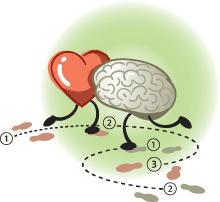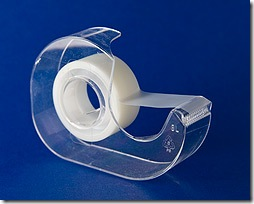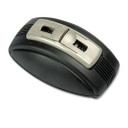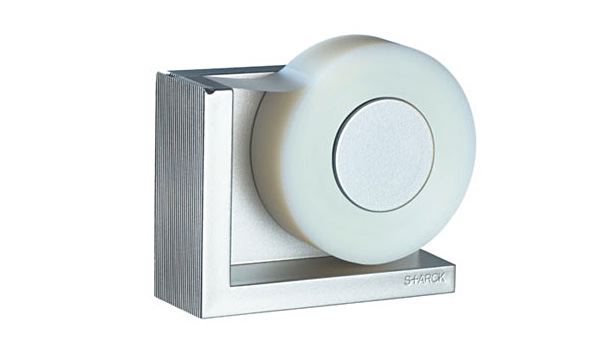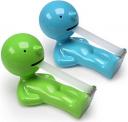Think-and-Feel in Design
In cognitive design we seek to go beyond usability and look-and-feel (feel in the tactile sense) to focus on creating a specific think-and-feel (feel in the emotional sense). Cognitive design is concerned with tuning (adding, deleting, tweaking) the features and functions of products so that customers have specific thoughts and emotions (mental states).
Excellence in cognitive design is clearly important when you are designing something to change behaviors or enhance mental processes (e.g. make better decisions) but it can also be applied to differentiate even the most mundane products.
For example, consider the classic tape dispenser.
Now, if I wanted to optimize this design to improve usability I might introduce something like the products below.
Pre-cut lengths of tape smoothly delivered from a wearable dispenser. The second product is a desktop dispenser that undocks into a wearable unit as well. These designs provide a new level of ease of use for the frequent taper. Note they also lower the cognitive load as I no longer need to decide how much tape I want to pull off the roll. This has been pre-decided.
Now consider this more stylized design:
No attempt has been made to improve ease of use but the choice of materials and contrasting design elements (rounded tape in square holder) creates a more powerful sensory impact or look-and-feel. It feels heavier and more textured.
Finally, consider these examples:
Such dispensers are designed to cause specific thoughts and emotions. As the Allstate example suggests, vendors sometimes provide such items for free so that you naturally and often think about their products. Employers do the same thing with their logos. These are all examples of cognitive design or tuning the features and functions of a product to cause specific thoughts and emotions during use.
Even mundane products like tape dispensers illustrate all four levels of design including:
1. Utility or engineering the core functionality of the product.
2. Usability or applying human factors to make the core functionality easier to use
3. Look-and-feel or applying sensorial design to positively impact perception, touch and the other basic senses
4. Think-and-feel or applying cognitive science to impact decision-making, activate specific mental models and metaphors, generate meaning, stimulate emotions and otherwise support specific mental states and processes.
Notice too that these levels overlap. For example, think-and-feel is involved in each design. The classic design could make you feel cheap or thrifty, the wearable design lowers the cognitive load and may even let you think creatively about the task of taping, the stylized design may invoke feelings and thoughts of power, quality and luxury.
Integrating all four levels and knowing when to emphasize one level over the other (e.g. think-and-feel when we are designing products or programs to change behaviors) is one of the major challenges in modern design.
